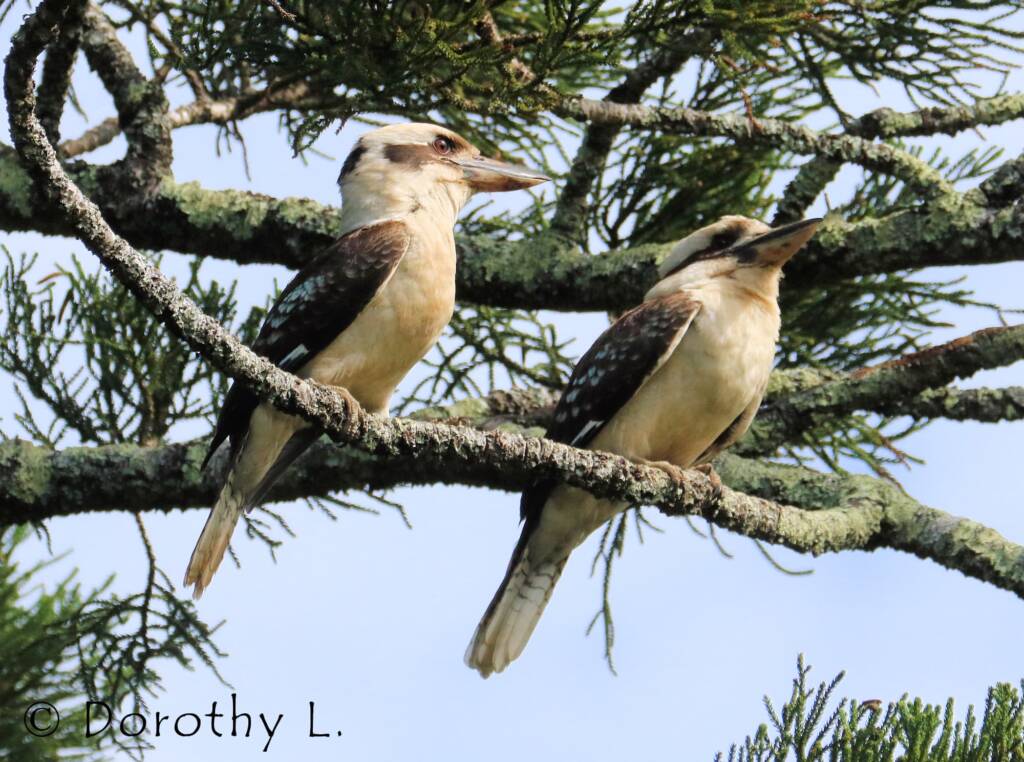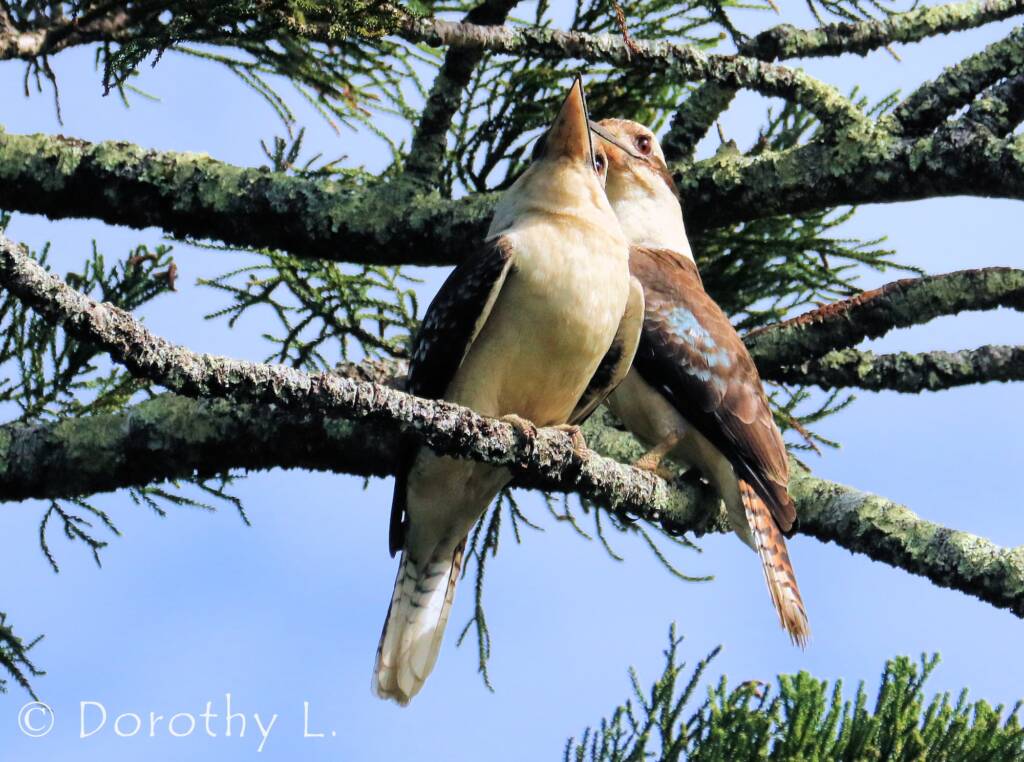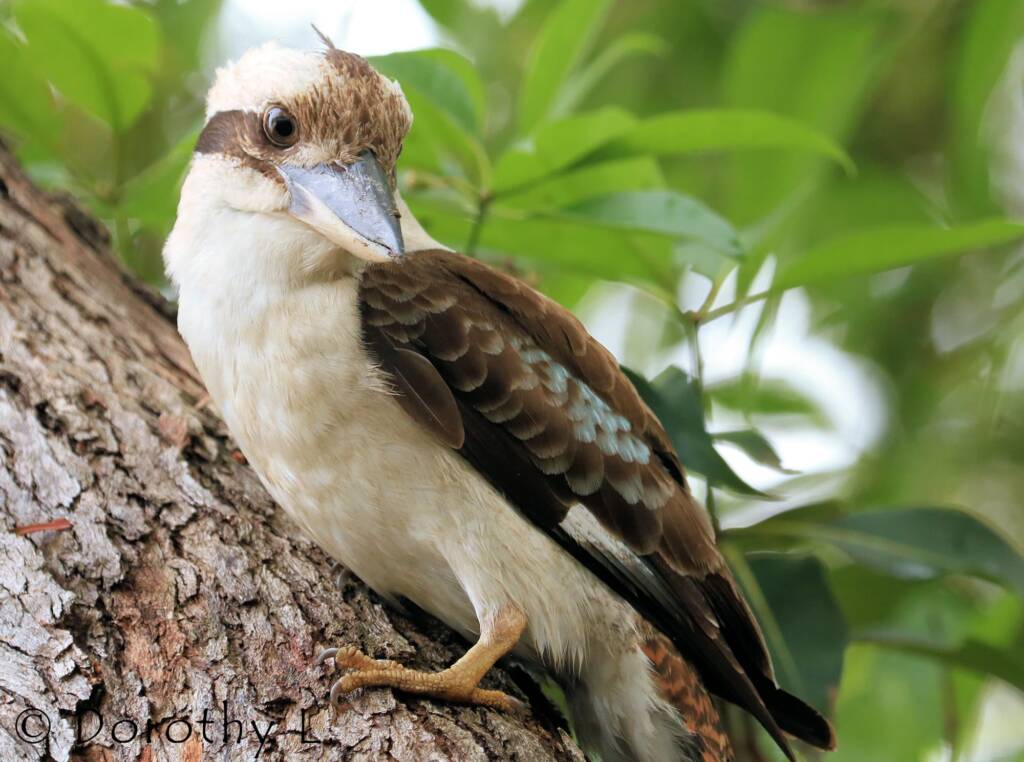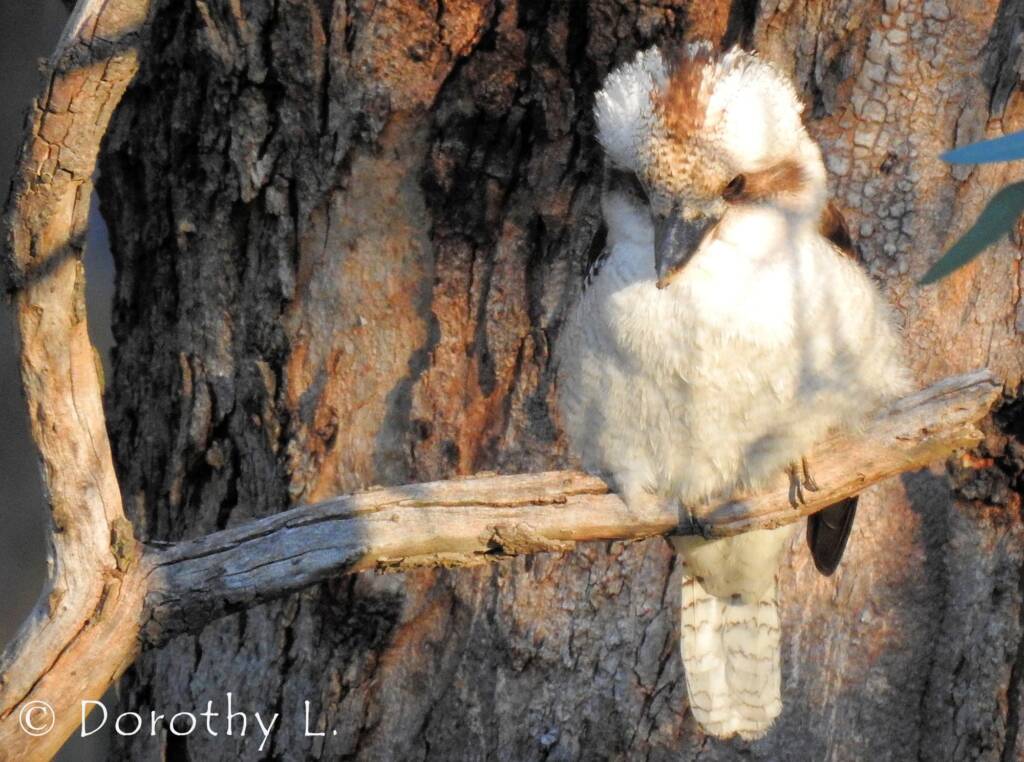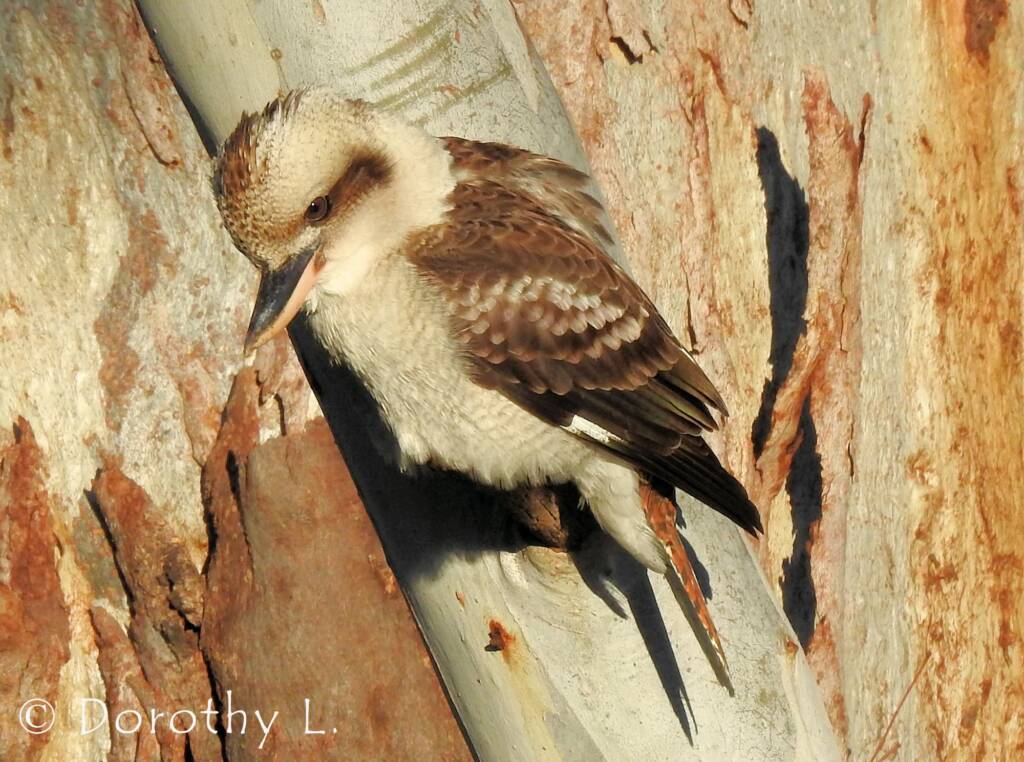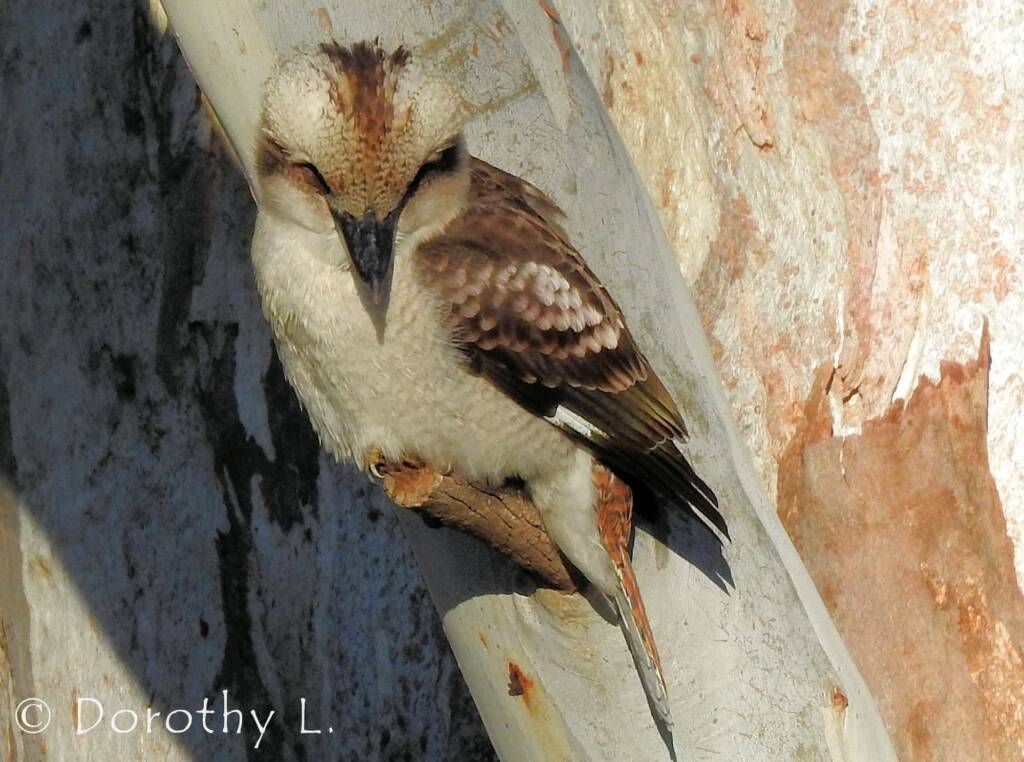KingfishersAzure Kingfisher Blue-winged Kookaburra Forest Kingfisher Laughing Kookaburra Red-backed Kingfisher Sacred Kingfisher Torresian Kingfisher
The Laughing Kookaburra (Dacelo novaeguineae) is one of the larger members of the kingfisher family and are one of the iconic creatures of Australia, with its distinctive call associated with the Australian bush. Their raucous cackle at dawn can be heard from Cape York in the north to Wilsons Promontory in the south.
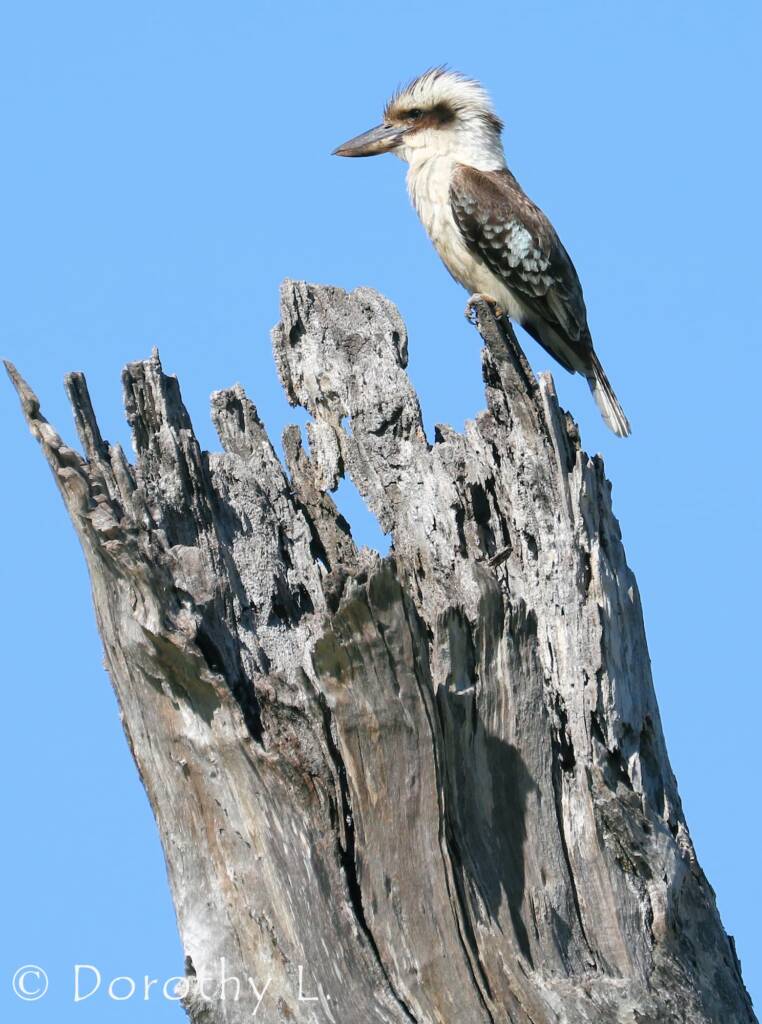
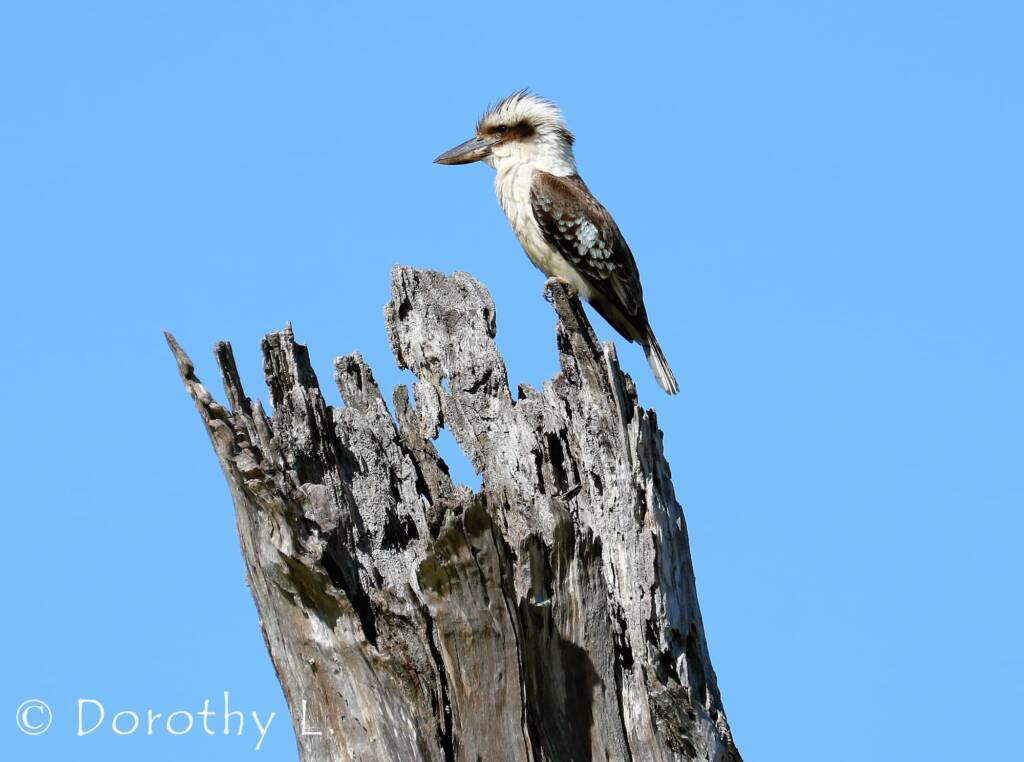
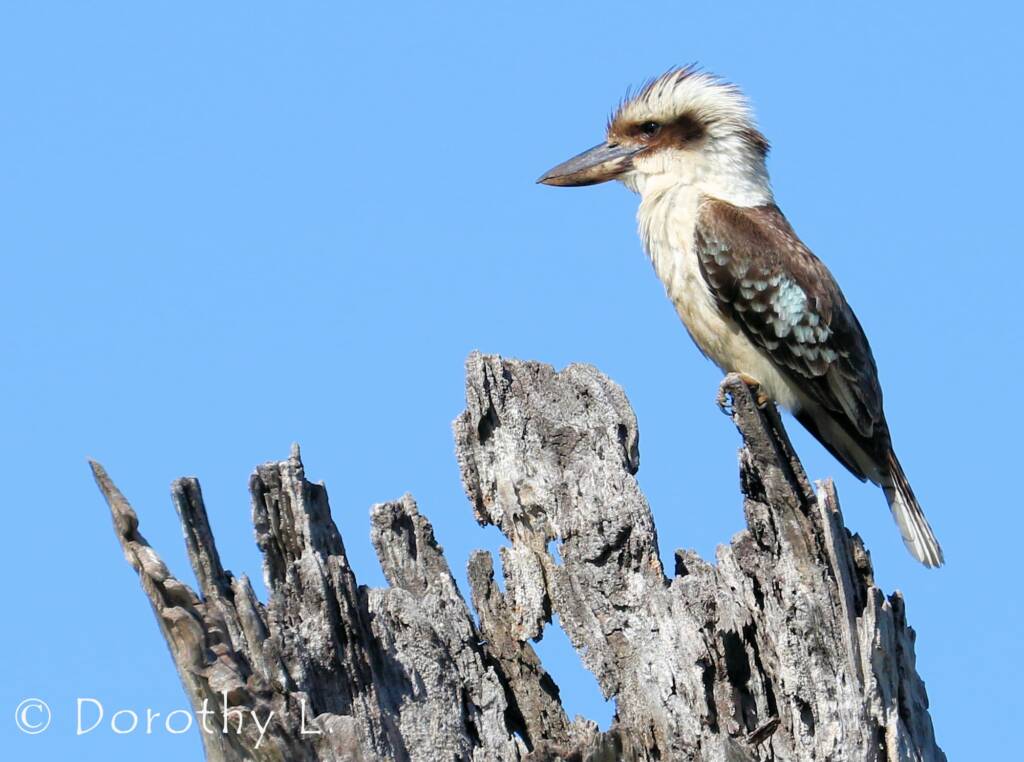
They have been introduced to other parts of Australia, causing some issues for local wildlife, taking up tree hollows and placing feeding pressure on small prey in these regions. They rarely eat fish and are not selective feeders, eating a high protein live diet of small snakes, reptiles, small mammals, insects, crustaceans, spiders, worms, amphibians, occasional small birds and other invertebrates.
The Laughing Kookaburra has a distinctive dark eye band, strong dagger-like bill, short legs, and a stout body. The adults have a white head and chest (usually a off-white colour), dark crown, blue spots on the wing coverts, and reddish-brown, rufous tail feathers banded in black. They are also faintly barred with dark brown and brown on the back and wings. The female of the species are slightly larger than the male with less blue on the rump feathers.

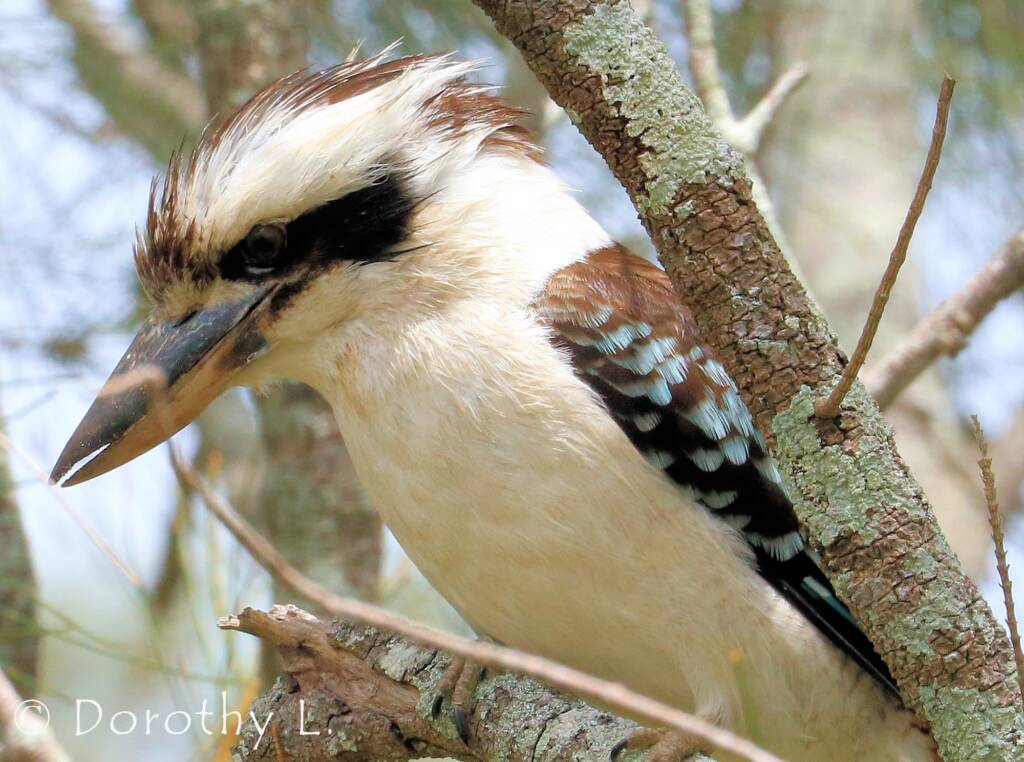
It is estimated that the kookaburra lifespan is between 12-15 years, with the adult pairing for life. The juveniles have shorter bills with a dark underside, and a strong white on the wing and mantle feathers.
Following series of photographs of the Laughing Kookaburra mating.

Aboriginal Symbolism and Dreaming
There are a number of stories about the Kookaburra in Aboriginal culture, including the following:
There is an Aboriginal story that tells of the kookaburra’s famous morning chorus of laughter being a signal for the sky people to light the great fire that illuminates and warms the earth by day.
When dawn is breaking there is a familiar and glorious cacophony, which is also the last bird calls that is heard as the sun sets, advertising to all the territory of this great bold bird.
Another story is:
When the sun rose for the first time, the god Bayame ordered the kookaburra to utter its loud, almost human laughter in order to wake up mankind so that they should not miss the wonderful sunrise.


And this tale is:
A long ago in the Dreamtime, there was a time when there was no sun, only a moon and stars. The animals that were on the earth in this time were much bigger than they are today.
One day, Dinewan the emu and Brolga the dancing bird, were arguing and fighting. Brolga got so angry that she ran over to Dinewan’s nest and grabbed one of her eggs, which she threw up into the sky. The egg landed on a heap of firewood breaking open and spilling the yellow yolk, which then burst into flames. The flames lit up the whole world, to the astonishment of all the creatures who had had only ever been used to the semi-darkness. They were dazzled by such brightness.
A good spirit who lived in the sky, saw how beautiful the earth looked when it was lit up by this blaze and thought it would be a good thing to make a fire every day. All night the good spirit and his helpers collected wood and stacked it up. When the pile of collected wood was big enough, the good spirit sends out the morning star to let them know on earth that the fire would soon be lit.
However, the spirits found that sending out the morning star was not enough, as many slept through and did not see the morning star. The spirits then decided there should be a noise at the dawn of each new day to announce the arrival of the sun. This noise would wake those sleeping, but what noise should they have.
Then one day the spirits heard the laughter of Goo-goor-gaga, the song of the kookaburra ringing through the air. They asked Goo-goor-gaga that as the morning star faded and the day dawned, would he laugh his loudest to awaken all the sleepers before sunrise. Goo-goor-gaga agreed and has done so ever since – making the air ring with his early morning laughter.
- Scientific classification
- Domain: Eukaryota
- Kingdom: Animalia
- Phylum: Chordata
- Class: Aves
- Order: Coraciiformes
- Family: Alcedinidae
- Subfamily: Halcyoninae
- Genus: Dacelo
- Species: D. novaeguineae
- Binomial name: Dacelo novaeguineae
- Synonyms: Dacelo gigas
KingfishersAzure Kingfisher Blue-winged Kookaburra Forest Kingfisher Laughing Kookaburra Red-backed Kingfisher Sacred Kingfisher Torresian Kingfisher

